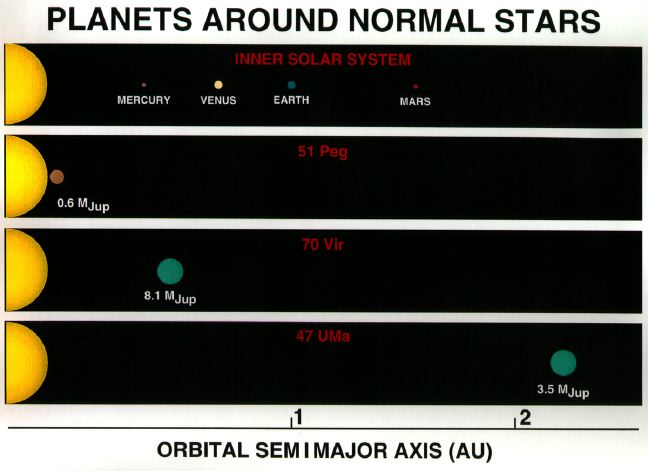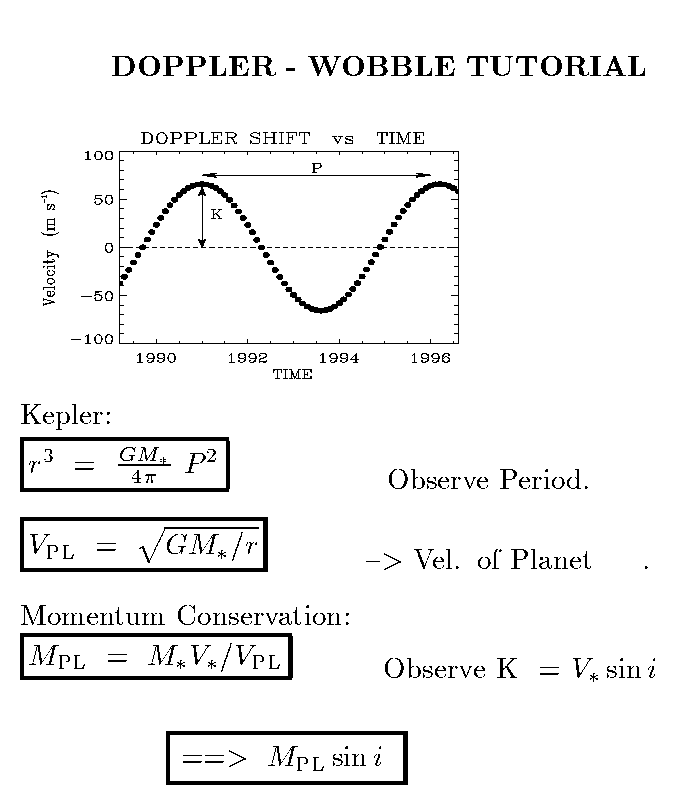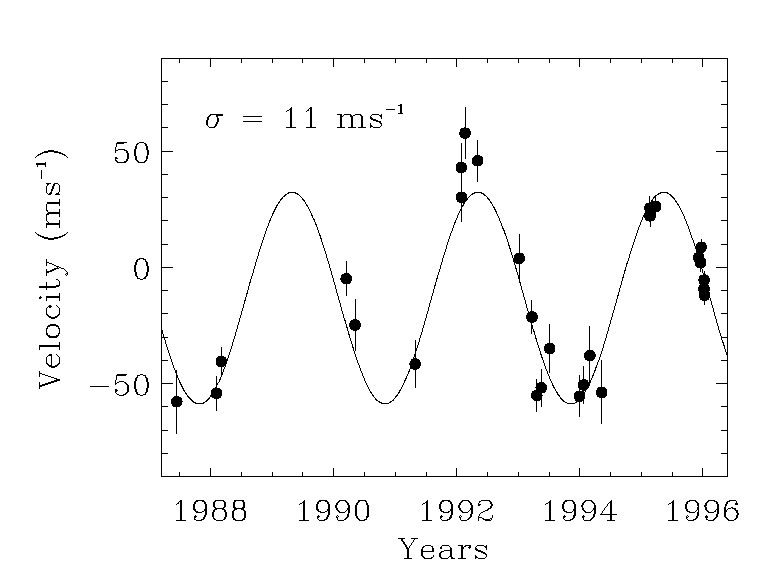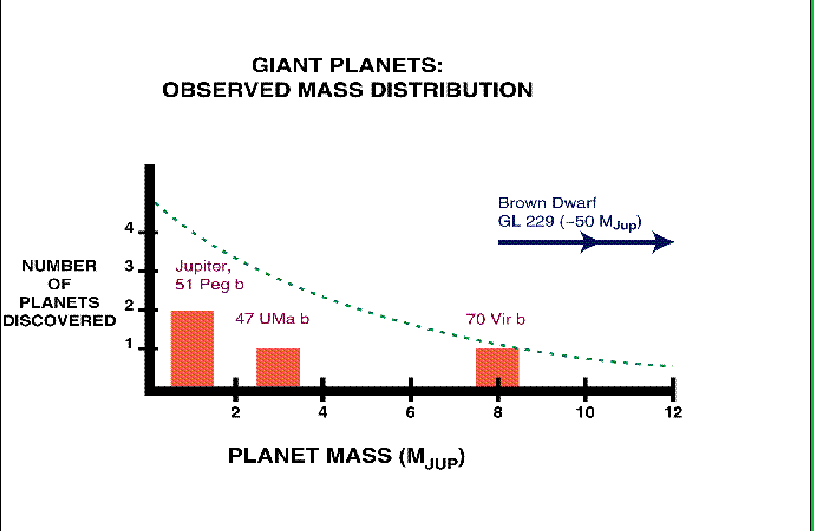More Newly Discovered Planets


These planets have all been discovered through accurate measurements of the radial velocity of the host star. If a star is in a binary system, it will orbit the center of mass of that system. To an external observer, this means the star will periodically move towards and away from the observer. The amplitude of this variation depends upon the mass of the binary companion as well as the orientation of the plane of the stars orbit with respect to the observer's line of site. In the case of the Sun-Jupiter system, Jupiter has sufficient mass that it causes a 12-13 meter/second variation in the space motion of the sun.
Therefore, if we can monitor nearby stars, with this level of precision, perhaps we can detect similar planetary congifurations to the Jupiter --Sun system. Newton's Laws can then be used to estimate the Mass of the planet which is perturbing the star in the following manner:


Finally, based on the statistics of 4 events, here is a mass distribution for the largest mass planet around the stars in which planetary systems have been detected:

(From, The Electronic Universe Project, U Oregon.)